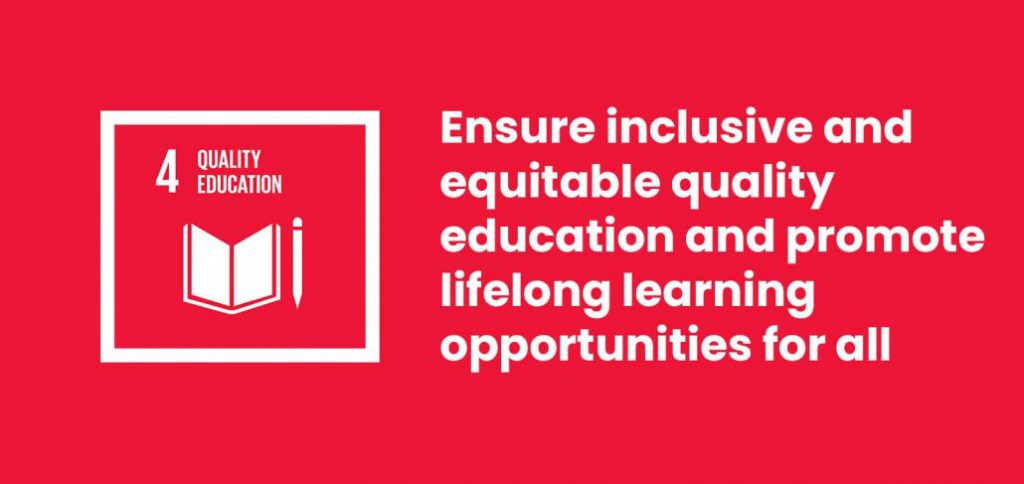UNESCO’s recent report predicts that 11 million girls will not return on school benches after the pandemic. On the International Day of the Girl Child, we may ask: Will ICT access effectively address the inequalities in education?
As I discussed in my previous post, access to education has become an ever more dire problem during covid-19. The pandemic has brought about new challenges of how to implement information and communication technologies (ICT) for distance learning, particularly in countries where home Internet access is not a given.
Not having access to education has disproportionately affected those already in disadvantaged positions – such as girls. As families around the world are watching their businesses crumble and savings diminish, educating their daughters may not be the top priority.
Lists of the benefits of female education are, however, pervasive. Getting more girls to school will slow down population growth, improve GDP, help abolish diseases, and ‘empower women’ among other numerous types of social progress. It is therefore no wonder that it is one of the key foci on UNESCO’s International Day of the Girl Child on Oct 10th.

Attempts to overcome access barriers
In her TED talk, Gwyneth Martin discusses some of the reasons for the gender gaps in education. One of them is something as natural, recurring, and life sustaining as… menstruation. And perhaps surprisingly to some of us, this isn’t just a problem in the Global South either. An astonishing amount of girls do not attend school during their period. It often has to do with not having access to sanitary products and the stigma around it. This is highlighted in some countries such as Kenya where, as Martin tells us, some boys sincerely believe menstruation is a ‘disease that affects girls.’ Consequently and sadly, girls tend to fall behind in their studies.
A World Bank study from 2018 found that “Limited educational opportunities for girls and barriers to completing 12 years of education cost countries between $15 trillion and $30 trillion in lost lifetime productivity and earnings.”
So, given the pursuit for economic growth by neoliberal governments, it is surprising this isn’t these countries’ top priority.
There are indeed countries that are attempting to overcome the barriers in ICT use and education by utilising other, less traditional channels for education. Mexico, for instance, has adopted TV as an EdTech platform by broadcasting educational programs for primary school aged children. In other Latin American countries, the governments have attempted to improve access to free wifi, and in Colombia teachers share homework on Whatsapp. This, ironically, despite the fact that the majority of students don’t have the app. (The implications of using social media platforms owned by massive companies like Facebook is a whole other discussion upon which I touched in my last post.)
Great gender disparities
However, serious gaps in addressing the already existing inequalities in access to education remain. United Nations Girls’ Education Initiative (UNGEI) points out that girls on average have 26% lower access to Internet than boys, have less access to technology, and when they do, they experience significantly more online bullying and sexual harassment.
On the same note, Heeks (2017) writes that when looking at the use of Massive Open Online Courses (MOOC) in Kenya, 80% of the users were male. Similarly, out of all Coursera users globally, women only form 40%.
That the private sector could act as a silver bullet in handling such serious issues as the lack of female education is clearly a hope many carry. Greg Mitchell seems to be one of them. The regional director at Angel Ventures writes in his blog post on World Economic Forum’s website:
Greg Mitchell
“There’s never been a better time for start-ups to focus on innovative solutions that help students, teachers and families access educational resources regardless of their location.”
However, we have long known that although private companies and philanthropists pledge to change the world, their work often prevents the system from truly changing. (If you’re not convinced by this statement yet, please go and read Anand Giridharadas’ Winners Take All.)
Is increased WiFi access the way to go?
What concerns me, is that simply throwing laptops and free WiFi on children’s laps, particularly female children’s, is expected to solve the problem. The reasons for unequal education are plentiful and so should be the solutions for it. For instance, in Latin America teenage pregnancy is the driving issue that forces girls to drop out of school. In other countries, it may be child marriages or household work. Achieving the UN’s 4th Sustainable Development Goal by 2030 therefore requires profound comprehension of the cultural and societal factors that lie beneath the obvious reasons such as girls not having laptops.

Contrary to this ‘tech cures all’ attitude, UNGEI in fact states that one step to increasing education equality is to:
“Include low-tech, free and gender-sensitive continued learning approaches in the education response to COVID-19.“
UNGEI
Similarly, they endorse the continuous presence of teachers and importance of considering the gender digital divide in distance education. The post-pandemic world will need to be rebuilt and transformed bit by bit. Perhaps this is the time for governments to actively address the existing inequalities to promote girls’ education.
They say technology itself is ‘neutral’ but many academics have contested this by pointing out the fact that technologies are mainly created by the most privileged of the population. The societal advantages, on their turn, tend to surface in technology as various biases that further disadvantage the already disadvantaged. Can we then come out of the school closures even stronger than before by utilising ICT and EdTech to put girls back on the school benches? Or will UNESCO’s alarming forecast of 11 million girls not returning to school come true?
Hopefully, this time of transformation will light a fire under governments and (EdTech) to show that ICT can be used for serious change.
References:
Heeks, R. 2017: Information and Communication Technology for Development (ICT4D). Abingdon: Routledge.


